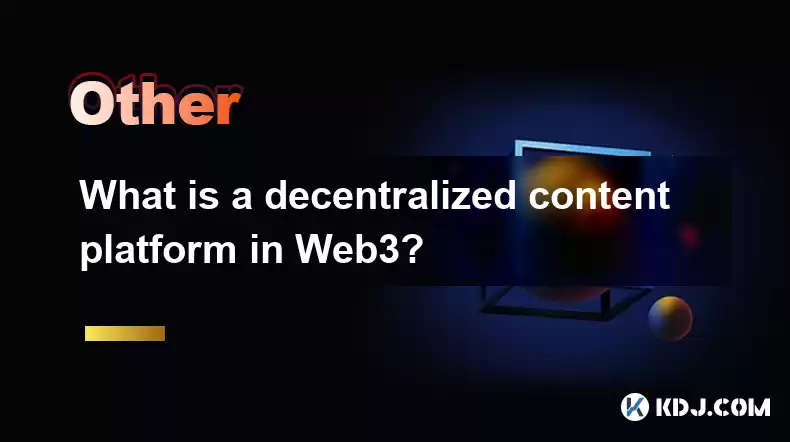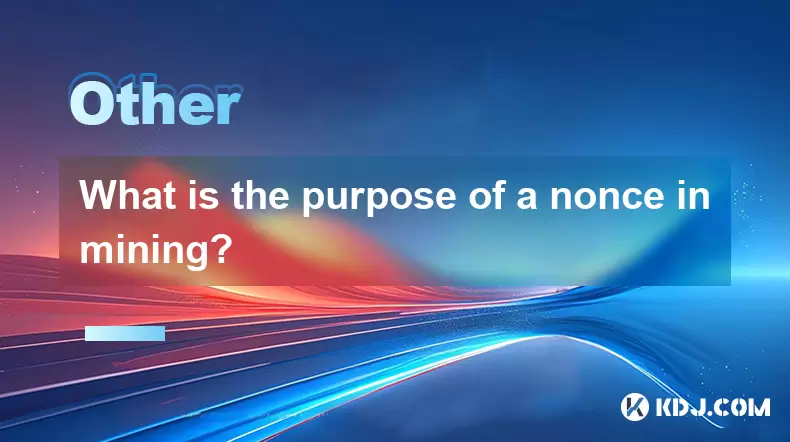-
 Bitcoin
Bitcoin $114400
0.68% -
 Ethereum
Ethereum $3550
2.48% -
 XRP
XRP $3.001
4.99% -
 Tether USDt
Tether USDt $0.9999
0.01% -
 BNB
BNB $757.6
1.46% -
 Solana
Solana $162.9
1.07% -
 USDC
USDC $0.9998
0.00% -
 TRON
TRON $0.3294
0.91% -
 Dogecoin
Dogecoin $0.2015
2.46% -
 Cardano
Cardano $0.7379
2.01% -
 Stellar
Stellar $0.4141
8.83% -
 Hyperliquid
Hyperliquid $37.83
-1.91% -
 Sui
Sui $3.454
0.76% -
 Chainlink
Chainlink $16.62
3.53% -
 Bitcoin Cash
Bitcoin Cash $554.6
2.84% -
 Hedera
Hedera $0.2486
3.91% -
 Ethena USDe
Ethena USDe $1.001
0.00% -
 Avalanche
Avalanche $21.95
3.34% -
 Toncoin
Toncoin $3.563
-2.85% -
 Litecoin
Litecoin $112.7
2.65% -
 UNUS SED LEO
UNUS SED LEO $8.977
0.13% -
 Shiba Inu
Shiba Inu $0.00001232
1.85% -
 Uniswap
Uniswap $9.319
2.93% -
 Polkadot
Polkadot $3.632
1.38% -
 Monero
Monero $307.2
2.36% -
 Dai
Dai $0.9997
-0.03% -
 Bitget Token
Bitget Token $4.340
0.91% -
 Pepe
Pepe $0.00001048
1.07% -
 Cronos
Cronos $0.1348
3.26% -
 Aave
Aave $261.5
1.93%
What is a decentralized content platform in Web3?
Decentralized content platforms in Web3 empower communities with democratic content governance, uncensorable content, and user-controlled data, fostering a more inclusive and transparent internet ecosystem.
Feb 16, 2025 at 05:13 pm

Understanding Decentralized Content Platforms
Key Points:
- Decentralized content platforms shift content ownership and moderation away from centralized entities towards the community.
- Blockchain technology provides a transparent and immutable ledger for storing content and ownership records.
- Uncensorable content enables users to publish and access content without fear of censorship or removal.
- User-owned data and privacy ensure that users maintain control over their own data without corporate interference.
- Example projects: IPFS, BitTorrent, Filecoin
Decentralization in Web3
In the era of Web2, centralized platforms such as Facebook and Google have dominated the digital landscape. These platforms have controlled content distribution, user data, and advertising revenues. In contrast, Web3 platforms aim to decentralize the internet by distributing these functions across a peer-to-peer network.
Decentralized content platforms (DCPs) are a crucial aspect of Web3. They offer several advantages over centralized platforms, including:
Content Ownership and Moderation
- Decentralized Governance: Content moderation and decision-making are conducted through democratic processes within the community, reducing the risk of unfair or biased moderation.
Uncensorable Content
- Transparent Ledger: Content is stored on a tamper-proof blockchain, making it resistant to censorship and manipulation.
- User-Owned Data and Privacy
- Data Control: Users maintain sovereign control over their own data, and can revoke access or transfer it at will.
- Privacy Protection: Data privacy is ensured through encryption and privacy-preserving technologies.
Examples of Decentralized Content Platforms
Several projects are leading the development of decentralized content platforms:
- IPFS: A decentralized distributed file storage system for building resilient, uncensorable, and censorship-resistant content platforms.
- BitTorrent: A decentralized peer-to-peer file-sharing protocol that allows users to distribute and access large files efficiently.
- Filecoin: A decentralized file storage network that allows users to store and retrieve files through a network of storage providers.
FAQs
What is the future of DCPs in Web3?
DCPs are poised to play a significant role in Web3, providing a foundation for uncensorable content, user-owned data, and democratic governance. They have the potential to reshape content creation, distribution, and consumption.
What challenges do DCPs face?
DCPs face challenges related to scalability, sustainability, and user adoption. Scalability limitations can arise as the amount of stored content grows. Ongoing research and development are required to improve performance and scalability while maintaining decentralization.
How will DCPs impact traditional content platforms?
DCPs offer alternative content distribution channels that challenge the dominance of traditional platforms. They may necessitate a shift in content ownership models and encourage the development of new monetization strategies in the content industry.
What role will blockchain technology play in the development of DCPs?
Blockchain provides the foundation for decentralization and data integrity in DCPs. It enables transparent content ownership records, secure data storage, and uncensorable distribution mechanisms.
Disclaimer:info@kdj.com
The information provided is not trading advice. kdj.com does not assume any responsibility for any investments made based on the information provided in this article. Cryptocurrencies are highly volatile and it is highly recommended that you invest with caution after thorough research!
If you believe that the content used on this website infringes your copyright, please contact us immediately (info@kdj.com) and we will delete it promptly.
- Cryptocurrency, Altcoins, and Profit Potential: Navigating the Wild West
- 2025-08-04 14:50:11
- Blue Gold & Crypto: Investing Disruption in Precious Metals
- 2025-08-04 14:30:11
- Japan, Metaplanet, and Bitcoin Acquisition: A New Era of Corporate Treasury?
- 2025-08-04 14:30:11
- Coinbase's Buy Rating & Bitcoin's Bold Future: A Canaccord Genuity Perspective
- 2025-08-04 14:50:11
- Coinbase's Buy Rating Maintained by Rosenblatt Securities: A Deep Dive
- 2025-08-04 14:55:11
- Cryptos, Strategic Choices, High Returns: Navigating the Meme Coin Mania
- 2025-08-04 14:55:11
Related knowledge

What is the purpose of a nonce in mining?
Aug 04,2025 at 05:56pm
Understanding the Role of a Nonce in Cryptocurrency MiningIn the world of cryptocurrency mining, the term nonce stands for 'number used only once.' Th...

What is the difference between on-chain and off-chain transactions?
Aug 02,2025 at 04:22pm
Understanding On-Chain TransactionsOn-chain transactions refer to digital asset transfers that are recorded directly on a blockchain ledger. These tra...

How are blocks linked together?
Aug 04,2025 at 06:56am
Understanding the Structure of a BlockchainA blockchain is a decentralized digital ledger composed of a sequence of blocks, each containing a list of ...

What is a node's role in a blockchain network?
Aug 03,2025 at 03:16pm
Understanding the Function of a Node in a Blockchain NetworkA node is a fundamental component of any blockchain network, acting as a participant that ...

How are transactions verified on a blockchain?
Aug 04,2025 at 12:35am
Understanding the Role of Nodes in Transaction VerificationIn a blockchain network, nodes are fundamental components responsible for maintaining the i...

What is the double-spending problem and how does blockchain prevent it?
Aug 02,2025 at 01:07pm
Understanding the Double-Spending ProblemThe double-spending problem is a fundamental challenge in digital currency systems where the same digital tok...

What is the purpose of a nonce in mining?
Aug 04,2025 at 05:56pm
Understanding the Role of a Nonce in Cryptocurrency MiningIn the world of cryptocurrency mining, the term nonce stands for 'number used only once.' Th...

What is the difference between on-chain and off-chain transactions?
Aug 02,2025 at 04:22pm
Understanding On-Chain TransactionsOn-chain transactions refer to digital asset transfers that are recorded directly on a blockchain ledger. These tra...

How are blocks linked together?
Aug 04,2025 at 06:56am
Understanding the Structure of a BlockchainA blockchain is a decentralized digital ledger composed of a sequence of blocks, each containing a list of ...

What is a node's role in a blockchain network?
Aug 03,2025 at 03:16pm
Understanding the Function of a Node in a Blockchain NetworkA node is a fundamental component of any blockchain network, acting as a participant that ...

How are transactions verified on a blockchain?
Aug 04,2025 at 12:35am
Understanding the Role of Nodes in Transaction VerificationIn a blockchain network, nodes are fundamental components responsible for maintaining the i...

What is the double-spending problem and how does blockchain prevent it?
Aug 02,2025 at 01:07pm
Understanding the Double-Spending ProblemThe double-spending problem is a fundamental challenge in digital currency systems where the same digital tok...
See all articles

























































































